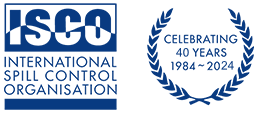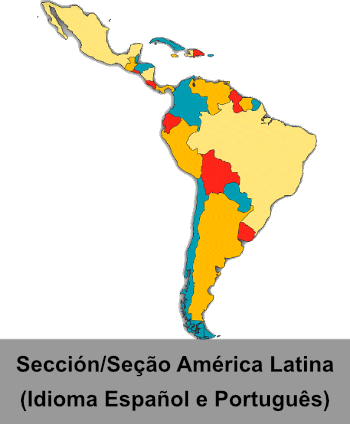This is part of a weekly column which provides the references and abstracts of new peer-reviewed scientific publications on oil spills.

Contributed by Dr Merv Fingas, this weekly column will provide the references and abstracts of new peer-reviewed scientific publications on oil spills. These references are selected on the basis of those papers that provide new insights into the fate, effects and control of oil spills.
Readers may choose to obtain the full publications and to do so, one of three methods is suggested; contact your library, search the internet with the DOI (digital object identifier) provided, or search the internet for the exact title. These are given in the order of likely success in obtaining the article. We hope that this provides useful information. Merv Fingas, ISCO colleague.
55 Parallel quantitation of salt dioctyl sodium sulfosuccinate (DOSS) and fingerprinting analysis of dispersed oil in aqueous samples, Yang, C., Fieldhouse, B., Waldie, A., Yang, Z., Hollebone, B., Lambert, P., Beaulac, V. (2022) Journal of Hazardous Materials, 435, art. no. 129046,
DOI: 10.1016/j.jhazmat.2022.129046
ABSTRACT: In many jurisdictions, dispersants are included in contingency plans as a viable countermeasure that can help reduce the overall environmental impact of marine oil spills. When used, it is imperative to monitor the progression of dispersant and oil to assess their environmental fate and behaviour. Amphiphilic salt dioctyl sodium sulfosuccinate (DOSS) is the major effective component of the most commonly available dispersants, such as Corexit® EC9500A. Without proper sample preparation, dispersed oil in water samples could interfere with the accurate analysis of DOSS and easily contaminate the LC-MS system. In this work, solid phase extraction (SPE) weak anion exchange (WAX) cartridges were used to separate oil and DOSS in aqueous samples. DOSS was accurately determined by liquid chromatography coupled with a high resolution Orbitrap mass spectrometer (LC-HRMS). Oil fingerprinting analysis was conducted and total petroleum hydrocarbons (TPHs), polycyclic aromatic hydrocarbons (PAHs), and petroleum biomarkers were determined by gas chromatography-flame ionization detection (GC-FID) and mass spectrometry (GC-MS). This SPE-LC/GC-MS method was used for the analysis of oil-dispersant water samples containing a mixture of Corexit® EC9500A and a selection of crude oils and refined petroleum products. Nearly a 100% DOSS recovery was obtained for various oil-surfactant conditions. Parallel quantitation of oils with dispersants was achieved using this method. A portion of the TPH loss was possibly attributed to oil retained by the SPE column. Chemical fingerprints and diagnostic ratios of target compounds in recovered dispersed oil overall remain unchanged compared with those of all studied oils.
56 Polycyclic aromatic hydrocarbons in giant African snails Archachatina marginata (Swainson, 1821) (Gastropoda: Pulmonata Achatinidae) from southern Nigeria, Iwegbue, C.M.A., Chukwudi-Madu, E., Tesi, G.O., Ikpefan, J.O., Martincigh, B.S. (2022) Journal of Food Composition and Analysis, 111, art. no. 104592,
DOI: 10.1016/j.jfca.2022.104592
ABSTRACT: Giant African snails were collected from different zones in southern Nigeria, and analyzed for their polycyclic aromatic hydrocarbon (PAH) content. The purpose was to provide information on the health risk arising from exposure to PAHs through consumption of these snails. A mixture of acetone/dichloromethane/n-hexane was used for the Soxhlet extraction of PAHs from the snail samples, and the resulting extracts were assayed by gas chromatography-mass spectrometry (GC-MS). The concentrations of the Ʃ17 PAH concentrations varied from 290 to 4180, 48–4150, 23–1560, 303–2970, and 2230–2880 µg kg−1 for snails purchased in Warri, Port Harcourt, Calabar, Onitsha, and Benin City zones respectively. The benzo(a)pyrene (BaP) concentrations in 53% of these snails exceeded the permissible limit of 6.0 µg BaP kg−1 in molluscs meant for consumption by humans. The PAH4 concentrations in 42% of these snail samples exceeded the specified limit of 35 µg kg−1 for molluscs. The hazard index (HI) from consumption of snails from these zones was less than one, while the total cancer risk relating to the consumption of snails from these zones by adults and children was of the order of 10−4 and 10−6, respectively. There is a need for caution in the consumption of snails from these regions because higher intake values than those assumed in this work could pose considerable carcinogenic risks to the consumers. The source analyses indicated PAHs in these snail samples originated from oil spills, biomass combustion, traffic emissions, and gas flaring.
57 Hydrocarbon bioremediation on Arctic shorelines: Historic perspective and roadway to the future, Góngora, E., Chen, Y.-J., Ellis, M., Okshevsky, M., Whyte, L. (2022) Environmental Pollution, 305, art. no. 119247,
DOI: 10.1016/j.envpol.2022.119247
ABSTRACT: Climate change has become one of the greatest concerns of the past few decades. In particular, global warming is a growing threat to the Canadian high Arctic and other polar regions. By the middle of this century, an increase in the annual mean temperature of 1.8 °C–2.7 °C for the Canadian North is predicted. Rising temperatures lead to a significant decrease of the sea ice area covered in the Northwest Passage. As a consequence, a surge of maritime activity in that region increases the risk of hydrocarbon pollution due to accidental fuel spills. In this review, we focus on bioremediation approaches on Arctic shorelines. We summarize historical experimental spill studies conducted at Svalbard, Baffin Island, and the Kerguelen Archipelago, and review contemporary studies that used modern omics techniques in various environments. We discuss how omics approaches can facilitate our understanding of Arctic shoreline bioremediation and identify promising research areas that should be further explored. We conclude that specific environmental conditions strongly alter bioremediation outcomes in Arctic environments and future studies must therefore focus on correlating these diverse parameters with the efficacy of hydrocarbon biodegradation.
58 Microbial community response to simulated diluted bitumen spills in coastal seawater and implications for oil spill response, Cobanli, S.E., Wohlgeschaffen, G., Ryther, C., MacDonald, J., Gladwell, A., Watts, T., Greer, C.W., Elias, M., Wasserscheid, J., Robinson, B., King, T.L., Ortmann, A.C.
(2022) FEMS microbiology ecology, 98 (5),
DOI: 10.1093/femsec/fiac033
ABSTRACT: Oil spills in coastal waters can have devastating impacts on local ecosystems, from the microscopic base through to mammals and seabirds. Increasing transport of diluted bitumen has led to concerns about how this novel product might impact coastal ecosystems. A mesocosm study determined that the type of diluent and the season can affect the concentrations of hydrocarbons entering the water column from a surface spill. Those same mesocosms were sampled to determine whether diluent type and season also affected the microbial response to a surface spill. Overall, there were no differences in impacts among the three types of diluted bitumen, but there were consistent responses to all products within each season. Although microbial abundances with diluted bitumen rarely differed from unoiled controls, community structure in these organisms shifted in response to hydrocarbons, with hydrocarbon-degrading bacteria becoming more abundant. The relative abundance of heterotrophic eukaryotes also increased with diluted bitumen, with few photosynthetic organisms responding positively to oil. Overall shifts in the microbial communities were minimal relative to spills of conventional oil products, with low concentrations of hydrocarbons in the water column. Oil spill response should focus on addressing the surface slick to prevent sinking or stranding to minimize ecosystem impacts.
59 Changes in Chemical Composition and Copepod Toxicity during Petroleum Photo-oxidation, Katz, S.D., Chen, H., Fields, D.M., Beirne, E.C., Keyes, P., Drozd, G.T., Aeppli, C. (2022) Environmental Science and Technology, 56 (9), pp. 5552-5562.
DOI: 10.1021/acs.est.2c00251
ABSTRACT: Photoproducts can be formed rapidly in the initial phase of a marine oil spill. However, their toxicity is not well understood. In this study, oil was irradiated, chemically characterized, and tested for toxicity in three copepod species (Acartia tonsa, Temora longicornis, and Calanus finmarchicus). Irradiation led to a depletion of polycyclic aromatic hydrocarbons (PAHs) and n-alkanes in oil residues, along with an enrichment in aromatic and aliphatic oil photoproducts. Target lipid model-based calculations of PAH toxicity units predicted that PAH toxicities were lower in water-accommodated fractions (WAFs) of irradiated oil residues (“irradiated WAFs”) than in WAFs of dark-control samples (“dark WAFs”). In contrast, biomimetic extraction (BE) measurements showed increased bioaccumulation potential of dissolved constituents of irradiated WAFs compared to dark WAFs, mainly driven by photoproducts present in irradiated oil. In line with the BE results, copepod mortality increased in irradiated WAFs compared to dark WAFs. However, low copepod toxicities were observed for WAFs produced with photo-oxidized oil slicks collected during the Deepwater Horizon oil spill. The results of this study suggest that while oil photoproducts have the potential to be a significant source of copepod toxicity, dilution and dispersion of these higher solubility products appear to help mitigate their toxicity at sea.
60 Phenotypic and Gene Expression Profiles of Embryo Development of the Ascidian Ciona robusta Exposed to Dispersants, Eliso, M.C., Corsi, I., Manfra, L., Spagnuolo, A. (2022) Water (Switzerland), 14 (10), art. no. 1539,
DOI: 10.3390/w14101539
ABSTRACT: Within EU approval policies, most dispersant ecotoxicity testing considers lethal concentrations for marine adult species, overlooking the embryotoxicological effects. Here we studied the ecotoxicity of two commercial dispersant formulations (dispersant A and B) on the embryogenesis of the ascidian Ciona robusta. Embryotoxicity and phenotypic alterations stated that dispersant B resulted more toxic than A (EC50 value of 44.30 and 160 µg mL−1, respectively) and induced severe larvae malformations at lower concentrations. Furthermore, the analysis of genes involved in different cellular response pathways indicated that those belonging to biotransformation were upregulated by dispersant A treatment, likely related to the presence of hydrocarbons. Instead, dispersant B induced cas8 gene downregulation, probably as a result of the prolonged exposure to mixture components. Our preliminary findings support the use of the C. robusta embryotoxicity test as a valuable tool for dispersant approval procedures, by providing sub-lethal responses on marine invertebrates closely related to vertebrates.
61 An Overview of Oil-Mineral-Aggregate Formation, Settling, and Transport Processes in Marine Oil Spill Models, Zhong, X., Niu, H., Li, P., Wu, Y., Liu, L. (2022) Journal of Marine Science and Engineering, 10 (5), art. no. 610,
DOI: 10.3390/jmse10050610
ABSTRACT: An oil spill is considered one of the most serious polluting disasters for a marine environ-ment. When oil is spilled into a marine environment, it is dispersed into the water column as oil droplets which often interact with suspended particles to form oil-mineral-aggregate (OMA). Knowing how OMA form, settle, and are transported is critical to oil spill modelling which can determine the fate and mass balance of the spilled volumes. This review introduces oil weathering and movement, and the commonly used numerical models that oil spill specialists use to determine how a spill will evolve. We conduct in-depth reviews of the environmental factors that influence how OMA form and their settling velocity, and we review how OMA formation and transport are modelled. We point out the existing gaps in current knowledge and the challenges of studying OMA. Such challenges include having to systematically conduct laboratory experiments to investigate how the environment affects OMA formation and settling velocities, and the need for a com-prehensive algorithm that can estimate an OMA settling velocity.
62 The capture of crude oil droplets by filter feeders at high and low Reynolds numbers, Letendre, F., Cameron, C.B. (2022) The Journal of experimental biology, 225 (8),
DOI: 10.1242/jeb.243819
ABSTRACT: Crustacean filter feeders capture oil droplets with the use of their ramified appendages. These appendages behave as paddles or sieves, based on the system’s Reynolds number. Here, we used high-speed videography, scanning electron microscopy and fluid mechanics to study the capturing mechanisms of crude oil droplets and the filtering appendage’s wettability by two species of barnacles (Balanus glandula and Balanus crenatus) and of the freshwater cladoceran Daphnia magna. Our results show that barnacle appendages behave as paddles and capture droplets in their boundary layers at low Reynolds number. At high Reynolds number, droplets are most likely to be captured via direct interception. There is an intermediate range of Reynolds number where droplets can be captured by both mechanisms at the same time. Daphnia magna captures droplets in the boundary layers of the third and fourth pair of thoracic legs with a metachronal motion of the appendages. All studied surfaces were revealed to be highly lipophobic, demonstrating captured oil droplets with high contact angles. We also discuss implications of such capture mechanisms and wettability on potential ingestion of crude oil by filter feeders. These results further our understanding of the capture of crude oil by filter feeders, shedding light on the main entry point of oil in marine food webs.
63 Estimation of Airborne Vapor Concentrations of Oil Dispersants COREXIT™ EC9527A and EC9500A, Volatile Components Associated with the Deepwater Horizon Oil Spill Response and Clean-up Operations, Stenzel, M.R., Arnold, S.F., Ramachandran, G., Kwok, R.K., Engel, L.S., Sandler, D.P., Stewart, P.A. (2022) Annals of Work Exposures and Health, 66, pp. I202-I217.
DOI: 10.1093/annweh/wxab056
ABSTRACT: The Deepwater Horizon (DWH) drilling unit explosion above the Macondo oil well on 20 April 2010 caused the release of approximately 4.9 million barrels (779 million L) of oil into the Gulf of Mexico. As part of a larger spill response and clean-up effort, approximately 1.84 million gallons (6.81 million L) of chemical dispersants COREXIT™ EC9500A and COREXIT™ EC9527A were applied to the resultant oil slicks through spraying on the water surface by plane and by vessel and through injection at the release source near the seabed. The GuLF STUDY is investigating the health effects of workers involved in the oil spill response and clean-up after the DWH explosion, and estimates of possible exposure to chemical dispersants were needed. Exposures were estimated to the volatile components of COREXIT™ EC9500A [petroleum distillates, hydrotreated light, and propylene glycol (PG)] and of COREXIT™ EC9527A [2-butoxyethanol (2-BE) and PG] using two of AIHA IHMOD2.0© mathematical modeling tools along with the dispersants’ chemical and physical properties. Monte Carlo simulations were used to reflect uncertainty in input parameters with both the two-box, constant emission model and the near and mid field plume model for indoor and outdoor activities, respectively. Possible exposure scenarios considered various evaporation rates, sizes of the dispersant pool, wind speeds, and ventilation rates. For the two-box model, mean near field exposure estimates to 2-BE ranged from 0.9 to 5.7 ppm, while mean far field estimated exposures ranged from 0.3 to 3.5 ppm. Estimates of mean near field plume model exposures ranged from 0.01 to 3.7 ppm at 2.5 ft from the source, and <0.01 to 0.3 ppm at 10 ft from the source. Estimated exposures to PG were approximately 10% of the calculated 2-BE exposures and exposures to petroleum distillates about 40% higher than the 2-BE estimates. Results indicate that compared with current occupational exposure guidelines, overexposure to petroleum distillates and PG probably did not occur in our study, but under some conditions, for short periods, exposure to 2-BE may have exceeded the limits for peak exposures. These estimates were developed for use in job-exposure matrices to estimate exposures of workers having contact with dispersant vapors for the GuLF STUDY.
64 A Comparative Analysis of In-Situ Optical Velocimetries for Oil Spill Flow Rate Estimation, Bkar, O.A., Ovinis, M., Mohmmed, A.O. (2022) Fluids, 7 (4), art. no. 126,
DOI: 10.3390/fluids7040126
ABSTRACT: In the Deepwater Horizon oil spill, optical plume velocimetry (OPV), a flow measurement technique for use in seafloor hydrothermal systems, was found to have the least uncertainty in estimating the rate at which oil was escaping from the well in the deep sea. However, OPV still had a high uncertainty of 21%, partly due to the limited accuracy of the temporal cross-correlation algorithm used. In this work, the accuracy of several in-situ optical velocimetries, namely wavelet-based optical velocimetry (WOV), OPV, and two classical correlation-based algorithms, namely fast Fourier transform (FFT) and normalized cross-correlation (NCC), for a plume flow with Reynolds numbers varying from 1847 to 11,656 was investigated. WOV, FFT, and NCC resulted in flow rates closer to the expected turbulent plume flow rate as compared to OPV. Moreover, a noisy velocity field was found using OPV. The accuracy of wavelet-based algorithm outperformed all cross-correlation based algorithms. The flow rate was measured with an error of 8.5% using WOV, whereas errors of 18.2%, 19.7%, to 21.1% were obtained when applying FFT, OPV, and NCC, respectively. There was a statistically significant difference between wavelet-based and correlation-based algorithms, but no statistically significant difference between the estimation of the three cross-correlation based velocimetries. WOV outperformed the other velocimetries and estimated flow rates with an error of 8.5%, whereas the OPV, FFT, and NCC were estimated with errors of 19.7%, 18.2%, and 50.8%, respectively.
65 Assessing Exposures from the Deepwater Horizon Oil Spill Response and Clean-up, Stewart, P., Groth, C.P., Huynh, T.B., Gorman Ng, M., Pratt, G.C., Arnold, S.F., Ramachandran, G., Banerjee, S., Cherrie, J.W., Christenbury, K., Kwok, R.K., Blair, A., Engel, L.S., Sandler, D.P., Stenzel, M.R.
(2022) Annals of Work Exposures and Health, 66, pp. I3-I22.
DOI: 10.1093/annweh/wxab107
ABSTRACT: The GuLF Study is investigating adverse health effects from work on the response and clean-up after the Deepwater Horizon explosion and oil release. An essential and necessary component of that study was the exposure assessment. Bayesian statistical methods and over 135 000 measurements of total hydrocarbons (THC), benzene, ethylbenzene, toluene, xylene, and n-hexane (BTEX-H) were used to estimate inhalation exposures to these chemicals for >3400 exposure groups (EGs) formed from three exposure determinants: job/activity/task, location, and time period. Recognized deterministic models were used to estimate airborne exposures to particulate matter sized 2.5 μm or less (PM2.5) and dispersant aerosols and vapors. Dermal exposures were estimated for these same oil-related substances using a model modified especially for this study from a previously published model. Exposures to oil mist were assessed using professional judgment. Estimated daily THC arithmetic means (AMs) were in the low ppm range (<25 ppm), whereas BTEX-H exposures estimates were generally <1000 ppb. Potential 1-h PM2.5 air concentrations experienced by some workers may have been as high as 550 μg m-3. Dispersant aerosol air concentrations were very low (maximum predicted 1-h concentrations were generally <50 μg m-3), but vapor concentrations may have exceeded occupational exposure excursion guidelines for 2-butoxyethanol under certain circumstances. The daily AMs of dermal exposure estimates showed large contrasts among the study participants. The estimates are being used to evaluate exposure-response relationships in the GuLF Study.
66 Estimates of Inhalation Exposures to Oil-Related Components on the Supporting Vessels During the Deepwater Horizon Oil Spill, Huynh, T.B., Groth, C.P., Ramachandran, G., Banerjee, S., Stenzel, M., Blair, A., Sandler, D.P., Engel, L.S., Kwok, R.K., Stewart, P.A. (2022) Annals of Work Exposures and Health, 66, pp. I111-I123.
67 DOI: 10.1093/annweh/wxaa113
ABSTRACT: The Deepwater Horizon oil spill response and clean-up (OSRC) involved over 9000 large and small vessels deployed in waters of the Gulf of Mexico across four states (Alabama, Florida, Louisiana, and Mississippi). For the GuLF STUDY, we developed exposure estimates of oil-related components for many work groups to capture a wide range of OSRC operations on these vessels, such as supporting the four rig vessels charged with stopping the spill at the wellhead; skimming oil; in situ burning of oil; absorbing and containing oil by boom; and environmental monitoring. Work groups were developed by: (i) vessel activity; (ii) location (area of the Gulf or state); and (iii) time period. Using Bayesian methods, we computed exposure estimates for these groups for: total hydrocarbons measured as total petroleum hydrocarbons (THC), benzene, toluene, ethylbenzene, xylene, and n-hexane (BTEX-H). Estimates of the arithmetic means for THC ranged from 0.10 ppm [95% credible interval (CI) 0.04, 0.38 ppm] in time periods 2 and 3 (16 July-30 September 2010) to 15.06 ppm (95% CI 10.74, 22.41 ppm) in time period 1a (22 April-15 May 2010). BTEX-H estimates were substantially lower (in the parts per billion range). Exposure levels generally fell over time and differed statistically by activity, location, and time for some groups. These exposure estimates have been used to develop job-exposure matrices for the GuLF STUDY.
67 Methods for the Analysis of 26 Million VOC Area Measurements during the Deepwater Horizon Oil Spill Clean-up, Groth, C.P., Banerjee, S., Ramachandran, G., Stewart, P.A., Sandler, D.P., Blair, A., Engel, L.S., Kwok, R.K., Stenzel, M.R. (2022) Annals of Work Exposures and Health, 66, pp. I140-I155.
DOI: 10.1093/annweh/wxab038
ABSTRACT: The NIEHS GuLF STUDY is an epidemiologic study of the health of workers who participated in the 2010 Deepwater Horizon oil spill response and clean-up effort. Even with a large database of approximately 28 000 personal samples that were analyzed for total hydrocarbons (THCs) and other oil-related chemicals, resulting in nearly 160 000 full-shift personal measurements, there were still exposure scenarios where the number of measurements was too limited to rigorously assess exposures. Also available were over 26 million volatile organic compounds (VOCs) area air measurements of approximately 1-min duration, collected from direct-reading instruments on 38 large vessels generally located near the leaking well. This paper presents a strategy for converting the VOC database into hourly average air concentrations by vessel as the first step of a larger process designed to use these data to supplement full-shift THC personal exposure measurements. We applied a Bayesian method to account for measurements with values below the analytic instrument’s limit of detection while processing the large database into average instrument-hour concentrations and then hourly concentrations across instruments on each day of measurement on each of the vessels. To illustrate this process, we present results on the drilling rig ship, the Discoverer Enterprise. The methods reduced the 26 million measurements to 21 900 hourly averages, which later contributed to the development of additional full-shift THC observations. The approach used here can be applied by occupational health professionals with large datasets of direct-reading instruments to better understand workplace exposures.
68 Using Real-Time Area VOC Measurements to Estimate Total Hydrocarbons Exposures to Workers Involved in the Deepwater Horizon Oil Spill, Ramachandran, G., Groth, C.P., Huynh, T.B., Banerjee, S., Stewart, P.A., Engel, L.S., Kwok, R.K., Sandler, D.P., Stenzel, M. (2022) Annals of Work Exposures and Health, 66, pp. I156-I171.
DOI: 10.1093/annweh/wxab066
ABSTRACT: Even though the Deepwater Horizon oil spill response and clean-up (OSRC) had one of the largest exposure monitoring efforts of any oil spill, a number of exposure groups did not have sufficient personal data available or there were gaps in days measured to adequately characterize exposures for the GuLF STUDY, an epidemiologic study investigating the health of the OSRC workers. Area measurements were available from real-time air monitoring instruments and used to supplement the personal exposure measurements. Objectives: The objective was to present a method that used real-time volatile organic compounds (VOCs) area measurements transformed to daily total hydrocarbons (THC) time-weighted averages (TWAs) to supplement THC personal full-shift measurements collected using passive charcoal badges. A second objective was to develop exposure statistics using these data for workers on vessels piloting remotely operated vehicle (ROV) vessels and other marine vessels (MVs) not at the job title level, but at the vessel level. Methods: From hourly vessel averages derived from ~26 million real-time VOC measurements, we estimated full-shift VOC TWAs. Then, we determined the relationship between these TWAs and corresponding full-shift THC personal measurements taken on the same vessel-day. We used this relationship to convert the full-shift VOC measurements to full-shift ‘THC’ TWA estimates when no personal THC measurements existed on a vessel-day. We then calculated arithmetic means (AMs) and other statistics of THC exposures for each vessel. Results: The VOC-derived estimates substantially supplemented the THC personal measurements, with the number of vessel-days for which we have exposure estimates increasing by ~60%. The estimates of the AMs are some of the highest observed in the GuLF STUDY. As expected, the AMs decreased over time, consistent with our findings on other vessels. Conclusions: Despite the inherent limitations of using real-time area measurements, we were able to develop additional daily observations of personal THC exposures for workers on the ROV vessels and other MVs over time. The estimates likely resulted in more representative estimates of the AMs in the GuLF STUDY. The method used here can be applied in other occupational settings and industries for personal exposure estimation where large amounts of area measurements and more limited numbers of personal measurements are available.
69 Estimates of Inhalation Exposures among Land Workers during the Deepwater Horizon Oil Spill Clean-up Operations, Huynh, T.B., Groth, C.P., Ramachandran, G., Banerjee, S., Stenzel, M., Blair, A., Sandler, D.P., Engel, L.S., Kwok, R.K., Stewart, P.A. (2022) Annals of Work Exposures and Health, 66, pp. I124-I139.
DOI: 10.1093/annweh/wxab028
ABSTRACT: Following the Deepwater Horizon oil spill disaster, thousands of workers and volunteers cleaned the shoreline across four coastal states of the Gulf of Mexico. For the GuLF STUDY, we developed quantitative estimates of oil-related chemical exposures [total petroleum hydrocarbons (THC), benzene, toluene, ethylbenzene, xylene, and n-hexane (BTEX-H)] from personal measurements on workers performing various spill clean-up operations on land. These operations included decontamination of vessels, equipment, booms, and personnel; handling of oily booms; hazardous waste management; beach, marsh, and jetty clean-up; aerial missions; wildlife rescue and rehabilitation; and administrative support activities. Exposure estimates were developed for unique groups of workers by (i) activity, (ii) state, and (iii) time period. Estimates of the arithmetic means (AMs) for THC ranged from 0.04 to 3.67 ppm. BTEX-H estimates were substantially lower than THC (in the parts per billion range). Both THC and BTEX-H estimates were substantially lower than their respective occupational exposure limits. The work group, ‘Fueled engines’ consistently was one of the higher exposed groups to THC and BTEX-H. Notable differences in the AM exposures were observed by activity, time and, to a lesser degree, by state. These exposure estimates were used to develop job-exposure matrices for the GuLF STUDY.
70 Estimates of Inhalation Exposures among Land Workers during the Deepwater Horizon Oil Spill Clean-up Operations, Vazquez Roman, K.N., Burggren, W.W. (2022) Comparative Biochemistry and Physiology Part – C: Toxicology and Pharmacology, 254, art. no. 109274,
DOI: 10.1016/j.cbpc.2022.109274
ABSTRACT: Morphological effects of crude oil exposure on early development in fishes have been well documented, but crude oil’s metabolic effects and when in early development these effects might be most prominent remains unclear. We hypothesized that zebrafish (Danio rerio) exposed to crude oil as a high energy water accommodated fraction (HEWAF) would show increased routine oxygen consumption (ṀO2) and critical oxygen tension (PCrit) and this effect would be dependent upon day of HEWAF exposure, revealing critical windows of development for exposure effects. Zebrafish were exposed to 0%, 10%, 25%, 50% or 100% HEWAF for 24 h during one of the first six days post-fertilization (dpf). Survival rate, body mass, routine ṀO2, and PCrit were then measured at 7 dpf. Survival rate and especially body mass were both decreased based on both exposure concentration and day of crude oil exposure, with the largest decrease when HEWAF exposure occurred at 3 dpf. HEWAF effects on routine ṀO2 also differed depending upon exposure day. The largest effect occurred at 3 dpf, when ṀO2 increased significantly by ~60% from 10.1 ± 0.8 μmol O2/g/h compared to control group value of 6.3 ± 0.4 μmol O2/g/h. No significant effects of HEWAF exposure on any day were evident for PCrit (85 ± 4 mmHg in the control population). Overall, the main effects on body mass and ṀO2 measured at 7 dpf occurred when HEWAF exposures occurred at ~3 dpf. This critical window for metabolism in zebrafish larvae coincides with time of hatching, which may represent an especially vulnerable period in development.
71 GuLF DREAM: A Model to Estimate Dermal Exposure Among Oil Spill Response and Clean-up Workers, Ng, M.G., Cherrie, J.W., Sleeuwenhoek, A., Stenzel, M., Kwok, R.K., Engel, L.S., Cavallari, J.M., Blair, A., Sandler, D.P., Stewart, P. (2022) Annals of Work Exposures and Health, 66, pp. I218-I233.
DOI: 10.1093/annweh/wxz037
ABSTRACT: Tens of thousands of individuals performed oil spill response and clean-up (OSRC) activities following the ‘Deepwater Horizon’ oil drilling rig explosion in 2010. Many were exposed to oil residues and dispersants. The US National Institute of Environmental Health Sciences assembled a cohort of nearly 33 000 workers to investigate potential adverse health effects of oil spill exposures. Estimates of dermal and inhalation exposure are required for those individuals. Ambient breathing-zone measurements taken at the time of the spill were used to estimate inhalation exposures for participants in the GuLF STUDY (Gulf Long-term Follow-up Study), but no dermal measurements were collected. Consequently, a modelling approach was used to estimate dermal exposures. We sought to modify DREAM (DeRmal Exposure Assessment Method) to optimize the model for assessing exposure to various oil spill-related substances and to incorporate advances in dermal exposure research. Each DREAM parameter was reviewed in the context of literature published since 2000 and modified where appropriate. To reflect the environment in which the OSRC work took place, the model treatment of evaporation was expanded to include vapour pressure and wind speed, and the effect of seawater on exposure was added. The modified model is called GuLF DREAM and exposure is estimated in GuLF DREAM units (GDU). An external validation to assess the performance of the model for oils, tars, and fuels was conducted using available published dermal wipe measurements of heavy fuel oil (HFO) and dermal hand wash measurements of asphalt. Overall, measured exposures had moderate correlations with GDU estimates (r = 0.59) with specific correlations of -0.48 for HFO and 0.68 for asphalt. The GuLF DREAM model described in this article has been used to generate dermal exposure estimates for the GuLF STUDY. Many of the updates made were generic, so the updated model may be useful for other dermal exposure scenarios.





